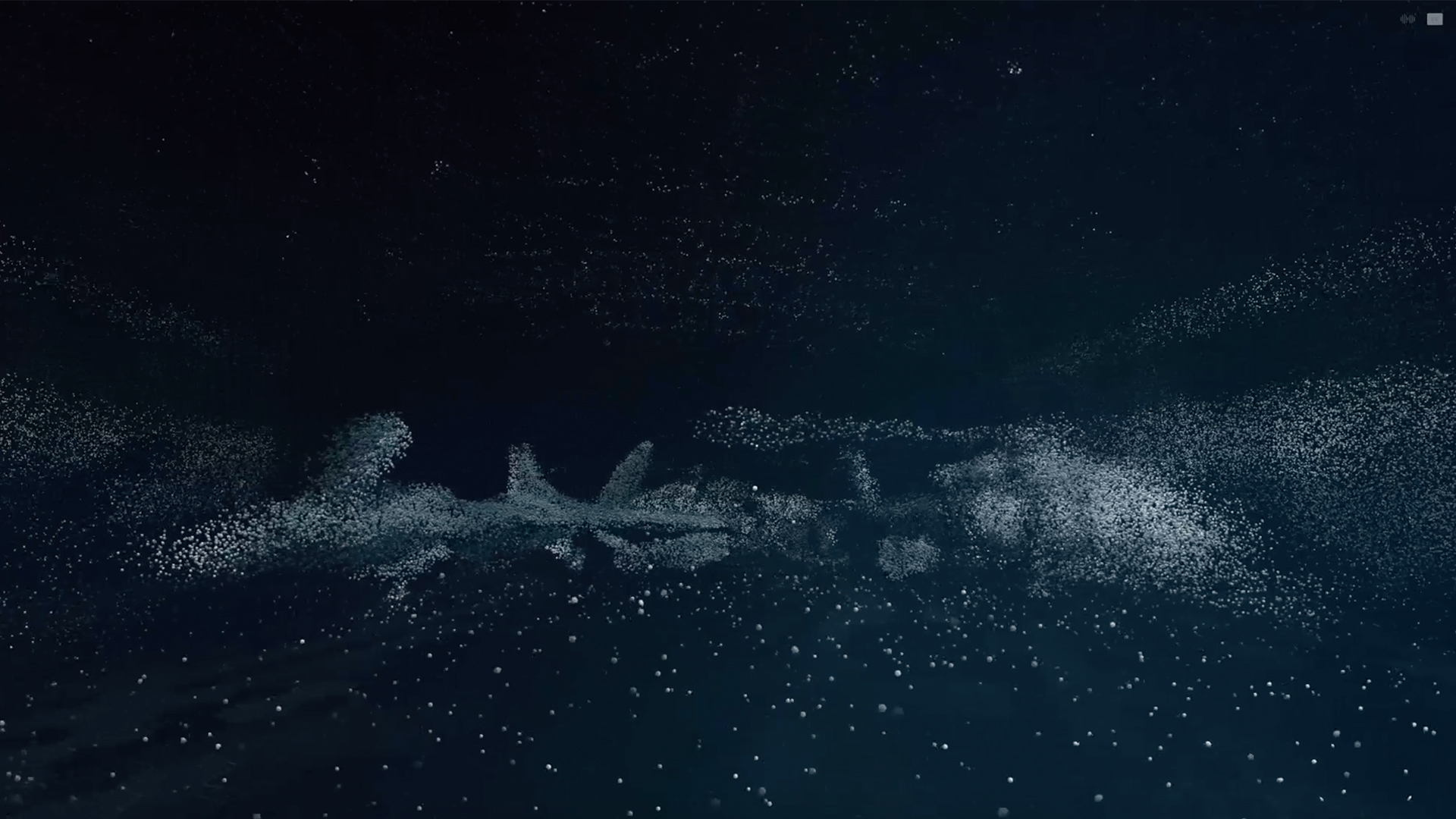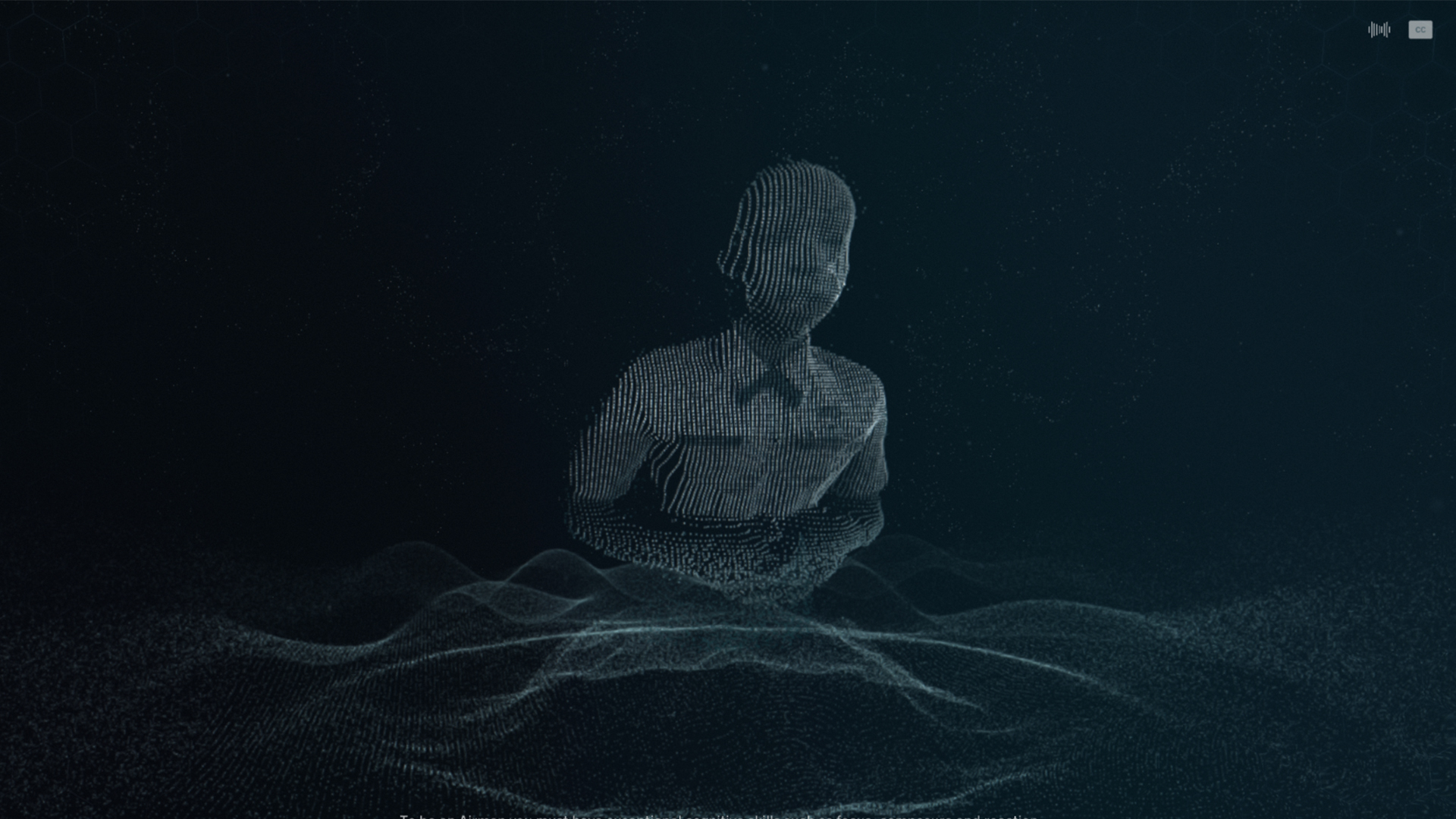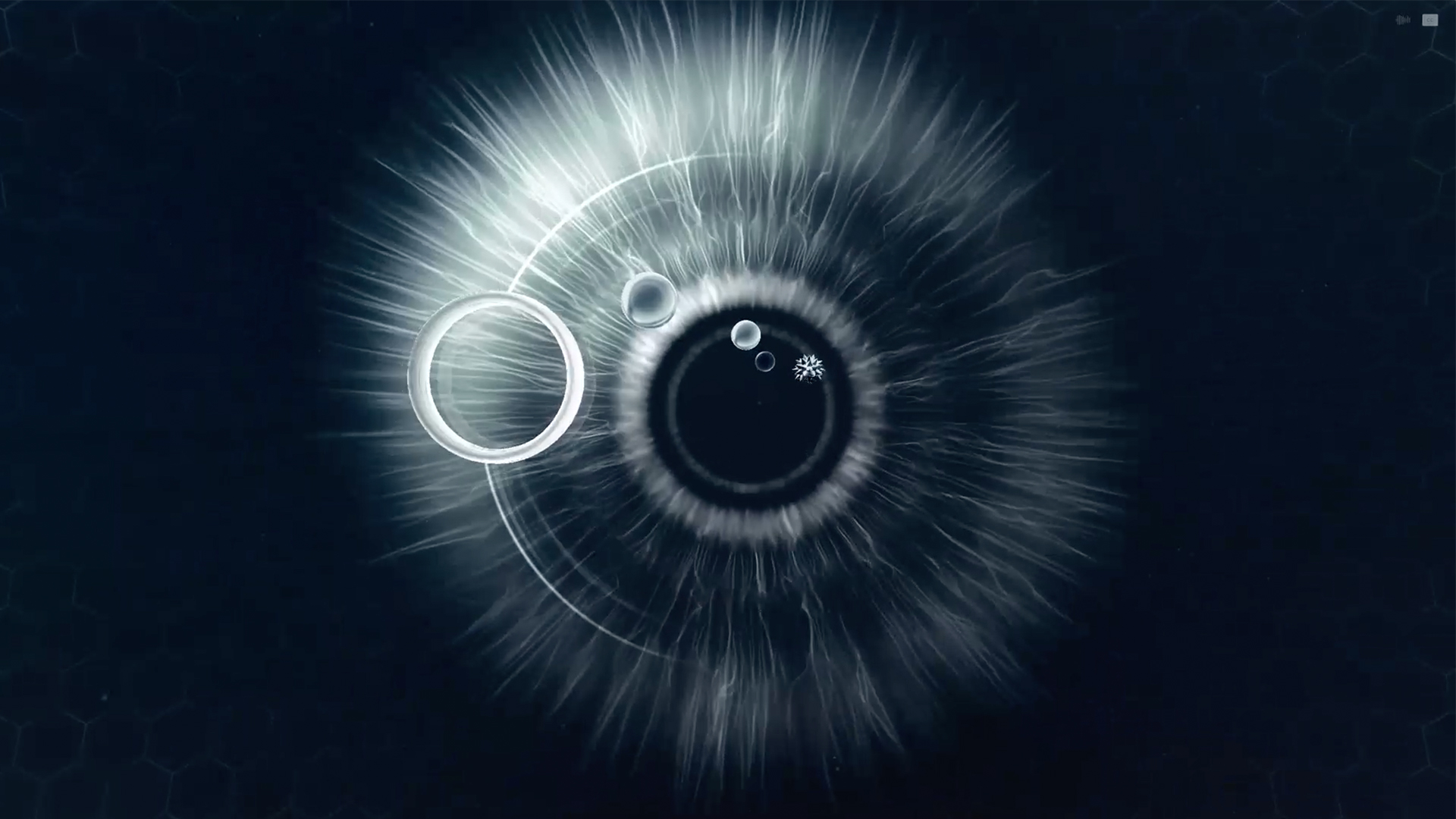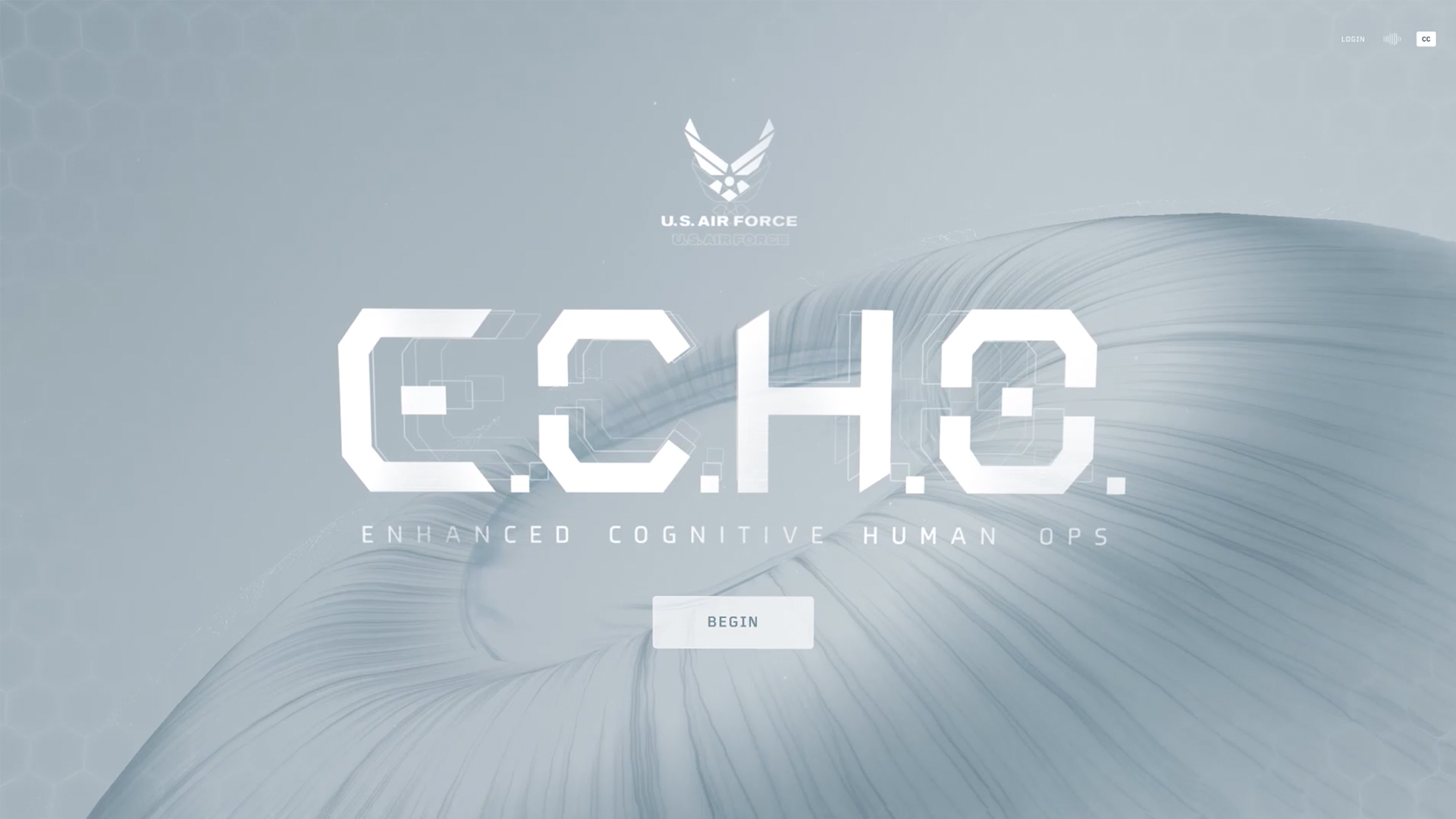
When it comes to finding that sweet spot between our ideas and the brand, we’re lucky. The Air Force is the most advanced branch of the military, so they expect us to bring them digital experiences that reflect that positioning.- GSD&M Team


Q: Tell us about your initial moodboard, wireframe, or prototype. How did things change throughout the process?
A: Initially we started in a very futuristic, technical place to reflect the tech-forward positioning of the Air Force. But the more we delved into the true focus of the experience, which is the study of cognitive abilities, we evolved the look and feel to be more bio-centric. That’s how we came up with the term, “techno-biology.” It combines elements of the human mind and technology in a futuristic way.
Q: What influenced your chosen technical approach, and how did it go beyond past methods?
A: Standard web design practice involves creating screens that work well on web and mobile devices. Adding on VR created another layer of complexity that affected our technical approach. We designed and built E.C.H.O. to account for all platforms, and tested as we went to ensure the experience not only worked seamlessly across devices but allowed users to have the same quality of experience regardless of the device used.When did you experience a breakthrough or an "a-ha" moment during this project?
We struggled early on to find the right balance between being tech-forward and being true to the human mind where these cognitive skills exist. The breakthrough came when someone suggested the term “techno-biology.” From that moment on, it was our driving force behind the design as well as the games themselves. We wanted the user to feel immersed in a world that was technical, but alive, at the same time.

